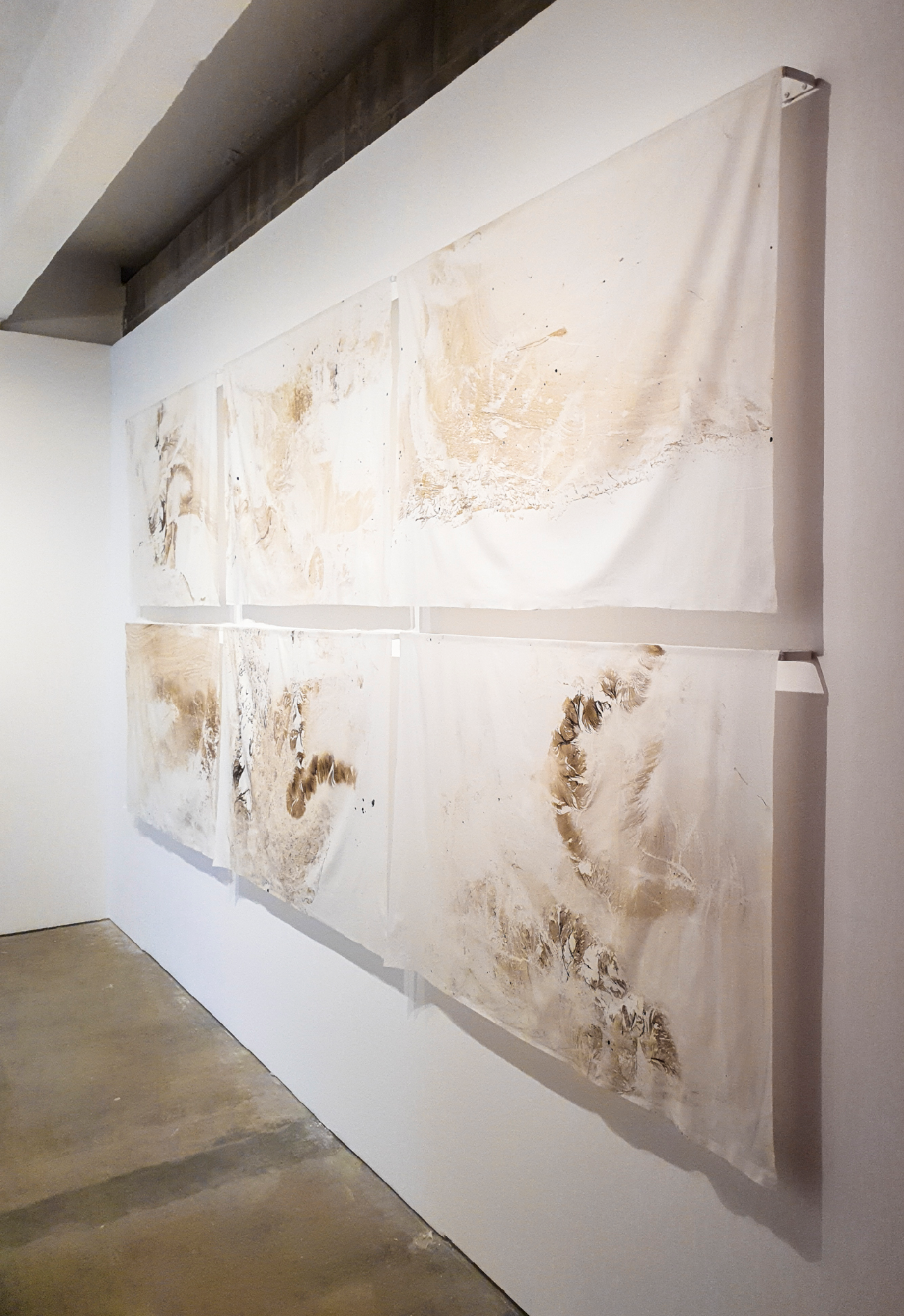‘‘Nem tudo é mar e Meia água, escancaram os problemas capitalistas cujas raízes remontam à prática colonial, de conquista/travessia das águas. Nem tudo é mar faz pensar diretamente na poluição da água pelo óleo cru condensado, mas sobretudo na presença do vento. O mesmo que trouxe as capitanias europeias carregou o petróleo, por quilômetros, espalhando-o por 116 municípios do litoral nordestino.
Mateus compra lençóis, corta-os e os usa como suporte de criação. Desfigurado de sua utilidade, o lençol assume novo papel sem se desvincular da ideia de casa, de cama, de descanso. Se a casa do talassociclo é o mar, a ação de Morbeck, de retirar as manchas de óleo por uma espécie de monotipia, acende a discussão sobre a separação fundada na modernidade entre o humano – a humanidade da qual fala Krenak – e a natureza.’’ | Fábio Gatti - trecho do texto curatorial da exposição ‘É TUDO DEPOIS’.
‘‘Na obra Nem tudo é mar a técnica é a mesma, sendo modificado o suporte, agora lençóis em que o ocre do óleo de torna mais claro, as formas mais abertas. Lentamente as matérias se transformam pelo contato que lhes foi imposto, para além do controle do artista.
O papel, o tecido e o óleo seguem reagindo e se modificando. A lentidão dessas transformações indica o movimento do todo, e sem aviso, as imagens recolhidas no mar podem nos conduzir à dança contínua de uma paisagem cósmica, nos lembrando que tudo está conectado. A catástrofe toma uma proporção ainda maior. | Priscila Miraz - artigo da revista Muito.
''Not everything is sea'' and ''Half water'' open up the capitalist problems whose roots go back to the colonial practice of conquering/crossing the waters. Nem tudo é mar makes us think directly about the pollution of the water by condensed crude oil, but above all about the presence of the wind. The same wind that brought the European captaincies carried the oil for kilometers, spreading it across 116 municipalities on the northeastern coast.
Mateus buys sheets, cuts them up and uses them as a creative support. Disfigured from its usefulness, the sheet takes on a new role without detaching itself from the idea of home, bed and rest. If the thalassocycle's home is the sea, Morbeck's action of removing the oil stains through a kind of monotype sparks a discussion about the separation founded on modernity between humans - the humanity of which Krenak speaks - and nature.'' | Fábio Gatti - excerpt from the curatorial text of the exhibition 'É TUDO DEPOIS'.
''In Nem tudo é mar the technique is the same, but the support has changed, now sheets in which the ochre of the oil becomes clearer, the shapes more open. Slowly the materials are transformed by the contact imposed on them, beyond the artist's control.
The paper, fabric and oil continue to react and change. The slowness of these transformations indicates the movement of the whole, and without warning, the images collected at sea can lead us into the continuous dance of a cosmic landscape, reminding us that everything is connected. The catastrophe takes on an even greater proportion. | Priscila Miraz - article in Muito magazine.
mateus morbeck

